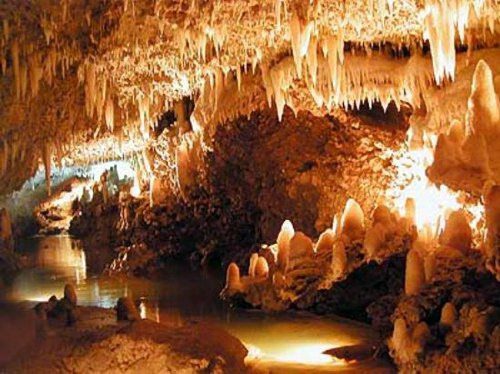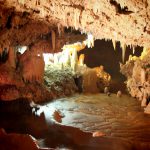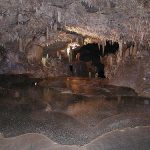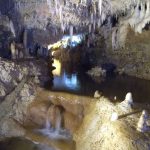Harrison’s Cave is a tourist attraction in the country of Barbados, first mentioned in 1795. Tourists can access the subterranean environment on a tramway.
The caves were first mentioned in historical documents in 1795, and were rediscovered in the early 1970s by Ole Sorensen and Tony Mason.
The caves are naturally formed by water erosion through the limestone rock.‚ The calcium-rich water that runs through the caves have formed the unusual stalactites and stalagmites formations. Travel through the caves is by tram, at certain points during the tour visitors are allowed to alight from the tram and get close up to the formations.‚ One main area of the caves is a huge cavern, termed “The Great Hall“, measuring over 50 feet in height. After the Great Hall the tram stops at “The Village“. At The Village some of the formations have joined together to form columns after thousands of years. Other areas the tram stops along the tour is “The Chapel,” “The Rotundra,” and the “The Altar.” Visitors travel through the Boyce Tunnel via tram to all depths of the cave. Harrison’s Cave is in the central uplands of Barbados. It is situated at 700‚ ft above sea level. The three characteristics of the central uplands are gullies, sinkholes and caverns. It is also an entrance for another place of insterest Welchman Hall Gully which is shut off for a purpose.







